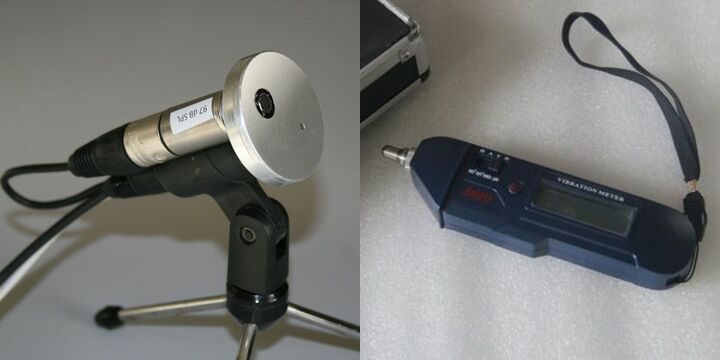Tracing cavitation sound
The Problem
According to https://www.popsci.com/environment/article/2013-04/sound-thirst trees make a sound when they cannot transport enough water to their body. This sound generated in the xylem is when cavitation is formed. At the recent meeting of the American Physical Society, scientists from Grenoble University in France presented research that not only were they able to determine that drought-stressed trees make noise, they were also able to show exactly which process created the sound. To really grok the research, it's helpful to understand how trees transport water. Trees draw ground water up through specialized tubes called xylem, relying on intermolecular forces between water molecules and themselves, and water molecules and the sides of the tubes, to create a single column of unbroken water in each xylem tube. But as groundwater dries up, the trees must pull harder on the remaining water; if the pressure is greater than the strength of the intermolecular forces, the column of water breaks and an air bubble forms. This process is called cavitation. Too many air bubbles can mean death for the tree.To ensure that these air bubbles were the culprits behind the acoustic signature of drought-parched trees, the researchers mocked up a tree in the lab.
Our Proposal
They placed a thin piece of pine wood, complete with its xylem intact, into a capsule filled with a gel. As the researchers evaporated the water out of the gel -- a test "drought" -- they simultaneously recorded video and sound of the cavitation in the xylem. The researchers discovered that about half of the sounds made by a tree are due to cavitation and that the process has its own unique acoustical signature. Acoustic monitoring already allows for the identification of individual species through environmental audio recordings. The Stevens Institute of Technology, working with CBP, sought to use acoustic sensors (piezoelectric sensors, lasers Doppler vibrometers – also applicable to wood, ultrasound microphones) to monitor rodents and insect pests in grain shipments In laboratory settings, off-the-shelf laser vibrometers detected Asian longhorned beetle larvae (Anoplophora glabripennis) in wood samples. (https://static1.squarespace.com/static/56047ac1e4b0612d66a56646/t/59888d6da5790a7d30e560db/1502121330871/federal_capacities_for_edrr_through_technology_innovation_prepub_8.7.17.pdf ) In our case since the ROD infected Ohia tree can transport less water than it needs, it is obvious that cavitation will occur at the upper part of the tree. By using this ultrasound microphones and vibrometers integrated with AI-assisted software that can ignore other sounds, we can trace this cavitation sound and the ambrosia beetles sound and this will be used for early warning mechanism.
We Assume that...
I am assuming that Ohia tree is no different than other trees that the research is conducted on. But it needs to be proven that the 'ohi'a tree actually has the same effect as the other trees.
I am assuming that ultrasound microphones, vibrometers and the AI will trace the sound of cavitation and the ambrosia beetles.
Constraints to Overcome
Detection of the ROD involves sample collection over challenging and rugged terrain and then lab analysis. This takes too much time and effort and after the analysis, the ROD might not be found. This project solves these problems because it tells us from which tree to take samples, which tree needs supervision and possible diagnosis of the tree before the lab report. Meaning, an Ohi’a tree which has cavitations sound or is flagged to be having a unique signature that relates to cavitations sound has a higher possibility of having the ROD fungi. This indication can speed up the detection of the ROD fungus. the total average cost per tree is 57.00 USD. If we test 100 trees to collect samples from all the 100 trees and test it in the lab, the total average cost per 100 trees becomes 5,700.00 USD. Keep in mind that the lab test may show that 1 tree have ROD if not any. This project tells us from which tree to take samples saving about 5,640.00 USD per 100 trees at best in this scenario.
Current Work
This solution is very tangible and realistic because it connects two known and proved science facts together in a very simple way. According to references like I mentioned above, trees make a sound when they cannot transport enough water to their body. It is a known fact that ultrasound microphones and vibrometers are effective in detecting these sounds or signatures. So, combining those will create a new method to detect the ROD fungus at an early level. The solution does not have any negative impact on the tree. The solution can be used at any time the client wishes to use or test because there are many options of ultrasound microphones and vibrometers on market. All required is purchasing one and test on the Ohi’a tree carefully in an infected and healthy tree. If there is a detection of those signatures, we have our successful prototype.
Current Needs
I need collaboration and funding to test the device.
